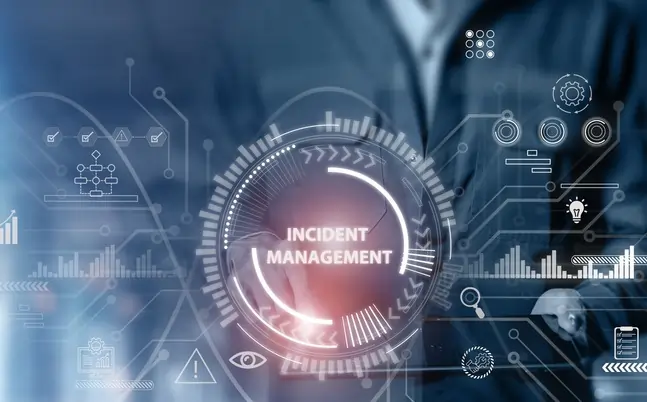
Creating an effective crisis management plan is crucial for any business aiming to navigate through unexpected challenges successfully. This plan serves as a blueprint, guiding your organization through emergencies or unexpected disruptions. From natural disasters to technological failures, having a proactive approach can significantly mitigate risks, safeguarding your business’s future and ensuring continuity. Here, we’ll explore the critical steps to developing a robust crisis management plan that aligns with your business objectives and industry standards.
Understanding the Importance of Crisis Management
Crisis management is not just about responding to an incident; it’s about preparing for potential crises and having a clear, actionable strategy in place. This preparation helps minimize the impact on your operations, reputation, and finances. Effective crisis management enables businesses to quickly adapt and recover, maintaining trust among customers, employees, and stakeholders.
Identifying Potential Crises
Start by identifying the types of crises that could affect your business. These could range from natural disasters like earthquakes and floods to cyber-attacks or supply chain disruptions. Each industry will have its specific set of risks, which should be assessed thoroughly to develop an appropriate response strategy.
Developing a Crisis Management Team
A dedicated crisis management team is essential. This team should include members from various departments such as HR, IT, operations, and communications. Each member should have a clear role and responsibilities during a crisis. Regular training and simulations should be conducted to ensure the team is prepared to act swiftly and efficiently.
Establishing Communication Strategies
Clear and effective communication is critical during a crisis. Develop a communication plan that includes internal communication to employees and external communication to customers, suppliers, and the media. This plan should specify what will be communicated, through which channels, by whom, and at what frequency.
Implementing Risk Management Practices
Risk management practices are integral to crisis management. These include regularly assessing potential risks, monitoring risk triggers, and having mitigation strategies in place. By understanding and managing risks, you can prevent many crises from occurring or reduce their impact.
Creating Response Strategies
For each identified risk, develop a specific response strategy. This strategy should outline the steps to take when a crisis occurs, including mobilizing the crisis management team, activating communication plans, and deploying resources to address the crisis effectively.
Training and Simulations
Regular training sessions and simulation exercises are crucial for the crisis management team and employees. These help everyone understand their roles during a crisis and ensure that the response strategies are effective. Simulations should be as realistic as possible and cover a variety of crisis scenarios.
Reviewing and Updating the Plan
Crisis management plans should not be static. Regular reviews and updates are necessary to adapt to new risks and changes in the business environment. This can involve incorporating lessons learned from recent crises or changes in industry practices.
Leveraging Technology
Technology can play a crucial role in managing crises. This can range from data backup and recovery systems to communication tools that facilitate rapid information sharing. Investing in the right technology can enhance your ability to respond to and manage a crisis.
Ensuring Legal Compliance
Ensure that your crisis management plan complies with local, national, and industry regulations. This includes data protection laws, health and safety regulations, and any other legal requirements relevant to your business.
Engaging with Stakeholders
Engage regularly with stakeholders, including local authorities, emergency services, and community leaders. Building relationships with these key groups can provide additional support and resources during a crisis.
Planning for Business Continuity
The ultimate goal of crisis management is to ensure business continuity. Your plan should include strategies for continuing critical operations throughout a crisis, such as identifying alternative supply chains, setting up remote work arrangements, or other adaptive strategies.
Learning from Past Crises
Use experiences from past crises to strengthen your plan. Analyzing what worked well and what didn’t helps refine your strategies and preparations. This continuous improvement process is vital for developing a resilient organization.
Ensuring Financial Stability in Turbulent Times
Another critical element of an effective crisis management plan is maintaining financial stability. This includes having a clear understanding of your financial reserves, access to emergency funding, and strategies for cost management during a crisis. Financial preparedness can make the difference between a quick recovery and a prolonged struggle.
Utilizing Social Media and Digital Tools for Effective Communication
In today’s digital age, social media and other digital tools can be invaluable during a crisis. They provide a platform for rapid, widespread communication. However, managing these platforms requires careful planning to ensure messages are accurate and appropriate. Your crisis management plan should outline how social media will be used, who will manage these communications, and how to address misinformation or negative feedback effectively.
Building a Resilient Supply Chain
For businesses that rely on a supply chain, disruptions can be particularly challenging. A resilient supply chain is flexible, transparent, and diversified. Your crisis management plan should include strategies for supply chain assessment and adjustments based on potential risks identified. This may involve diversifying suppliers or investing in technology to improve supply chain visibility and responsiveness.
Incorporating Sustainability into Crisis Management
Sustainability should be a consideration in your crisis management planning. This involves looking at how your responses to crises can align with long-term environmental and social goals. For example, any physical rebuilding after a crisis should consider sustainable materials and technologies.
Evaluating the Plan’s Effectiveness After a Crisis
After any crisis, an in-depth evaluation of how the crisis management plan performed is crucial. This review should cover what actions were effective, what needs improvement, and how the plan affected the overall resilience of the business. Insights gained from this evaluation should be integrated into future updates of the crisis management plan.
Best Practices in Crisis Management
To conclude, let’s look at some best practices in crisis management:
- Maintain an up-to-date list of all critical contacts and resources.
- Regularly back up all essential data and have robust cybersecurity measures in place.
- Train employees across all levels of the organization, not just the crisis management team.
- Foster a culture of resilience and adaptability within the organization.
FAQs on Crisis Management Plans
How often should a crisis management plan be updated?
- Review and update your crisis management plan at least annually or following any significant change in your business or operating environment.
What is the difference between a crisis management plan and a business continuity plan?
- A crisis management plan focuses on managing the crisis itself and minimizing its immediate impacts, while a business continuity plan focuses on maintaining critical business functions during and after a crisis.
How can small businesses develop effective crisis management plans?
- Small businesses should focus on identifying key risks, developing simple response strategies, and ensuring clear communication. Leveraging local resources and technology can also help in effective planning.
What role does leadership play in crisis management?
- Leadership is crucial during a crisis. Leaders must make decisive decisions, communicate effectively, and maintain the morale of their teams. Strong leadership helps ensure a cohesive and effective response.
Can technology replace traditional crisis management practices?
- While technology can enhance crisis management, it cannot replace traditional practices such as team training, stakeholder engagement, and leadership. Technology should be used to supplement these fundamental elements.
Conclusion
Developing an effective crisis management plan is essential for any business. It ensures preparedness for unexpected events, minimizes disruptions, and maintains continuity. By understanding potential risks, creating a skilled crisis management team, and regularly updating your plan, you can safeguard your business against future crises. Remember, a well-crafted crisis management plan not only protects but also enhances your business resilience, empowering you to face challenges confidently and successfully.


